Do you recognize the pictures below? If you go back to my previous post; Polish soup (Zurek), you’ll find the fermentation of rye flour occurring. This brings us to the topic today which is fermentation. Funny how ideas pop up in your head while you’re doing something or cooking. In my case, I was waiting for the fermentation process to finish. I thought to myself; fermentation would be an interesting topic to research for my next blog.
Here are the pictures for the fermentation of rye flour. Rye flour with garlic and bay leaves; ready after 4 – 5 days to be used in my Zurek soup recipe:
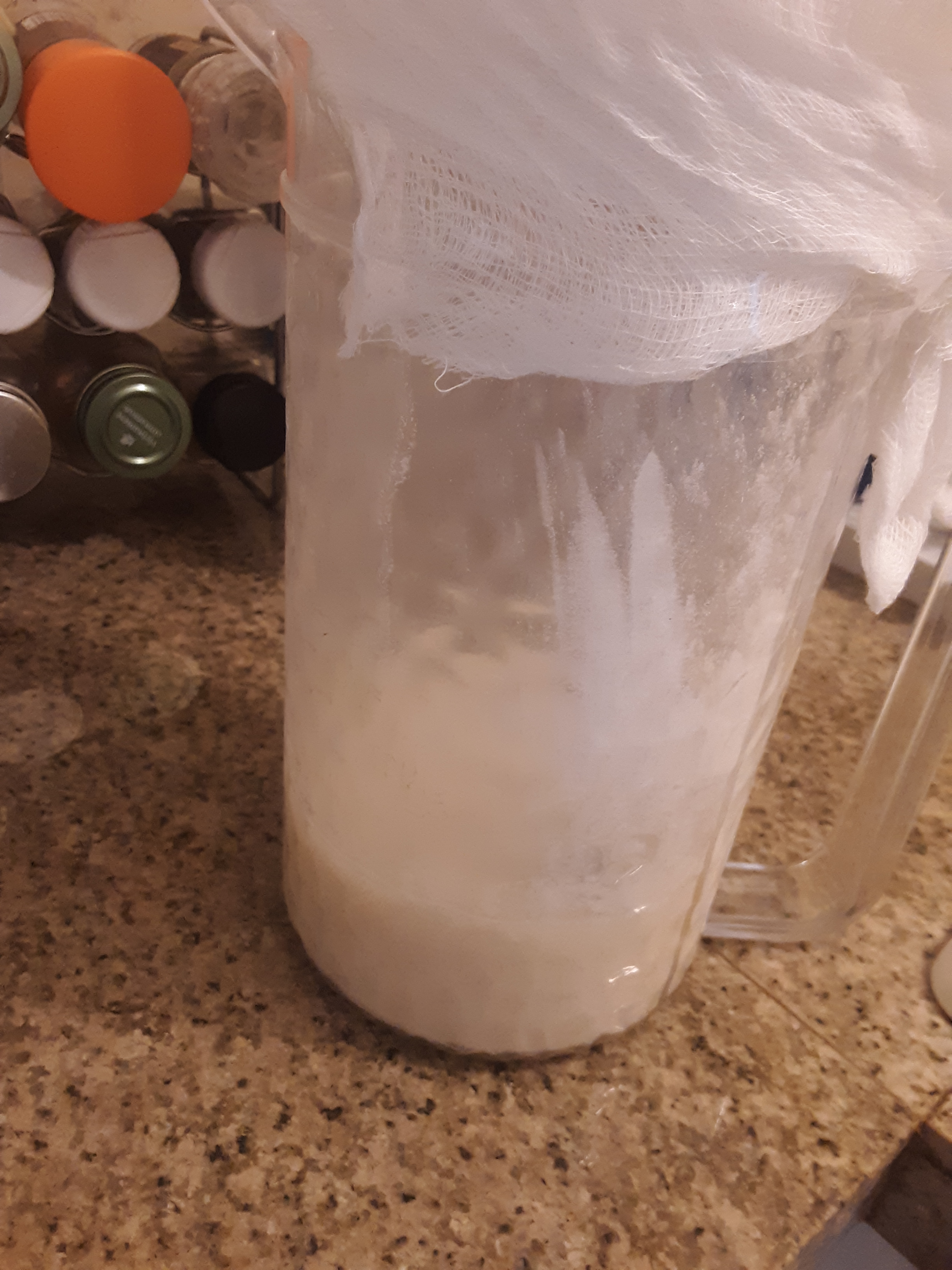
Thick green layer formed on top with a gray-brown bottom layer, and a pungent smell. I scooped the green pieces out which came from the garlic, and fermentation:
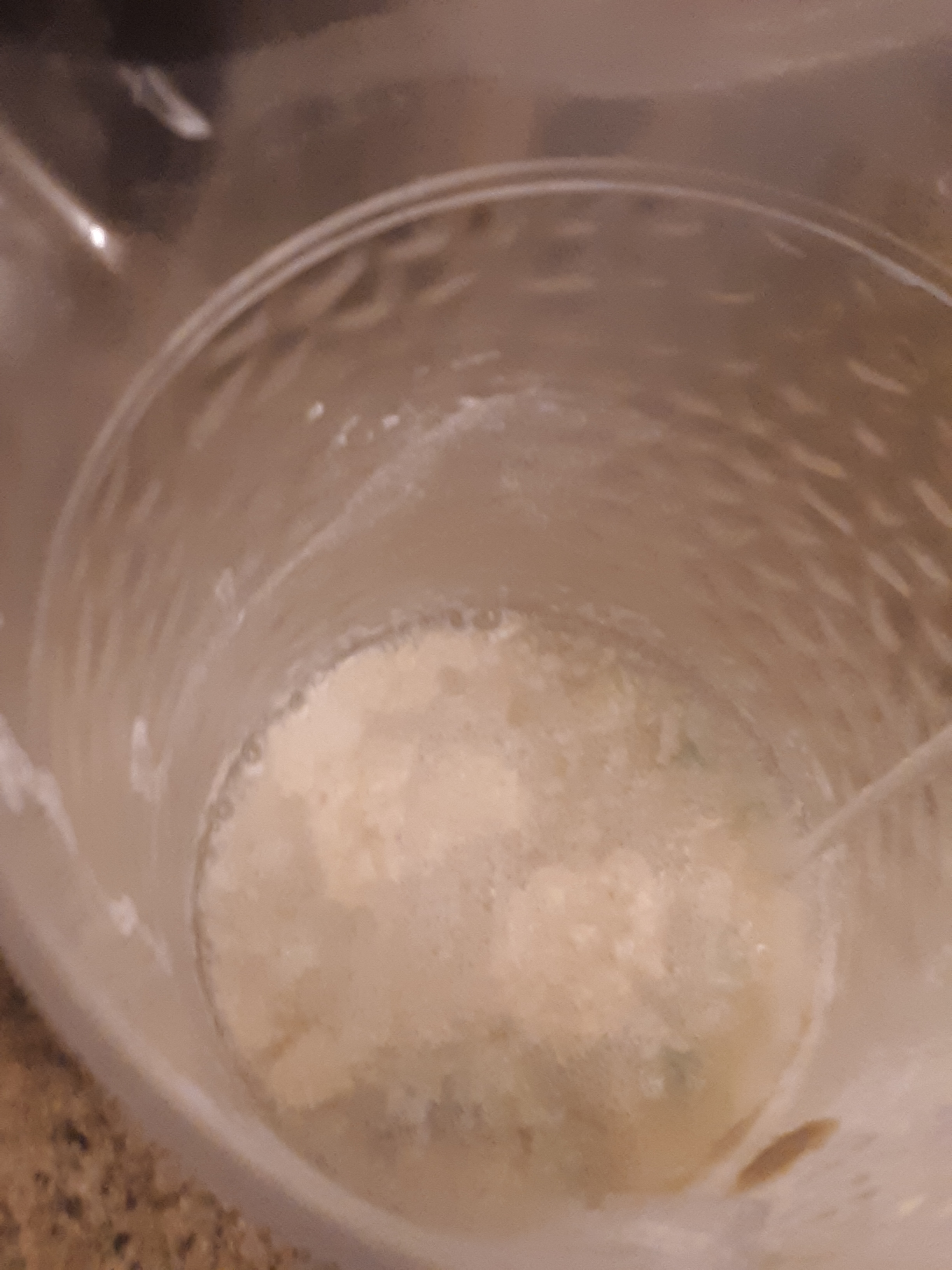
Strained the solids out:
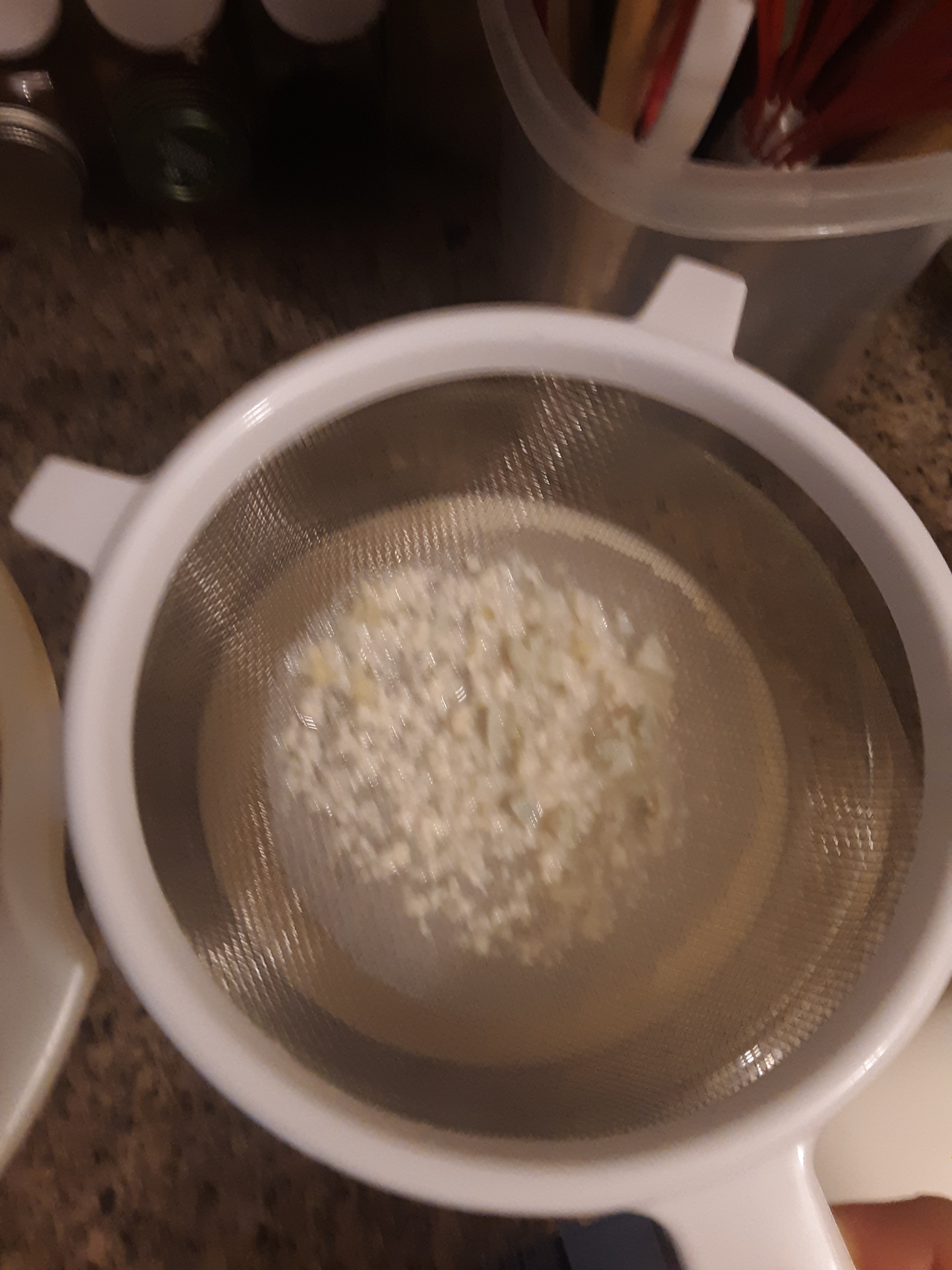
Creamy texture with a garlic taste; great addition to the soup:
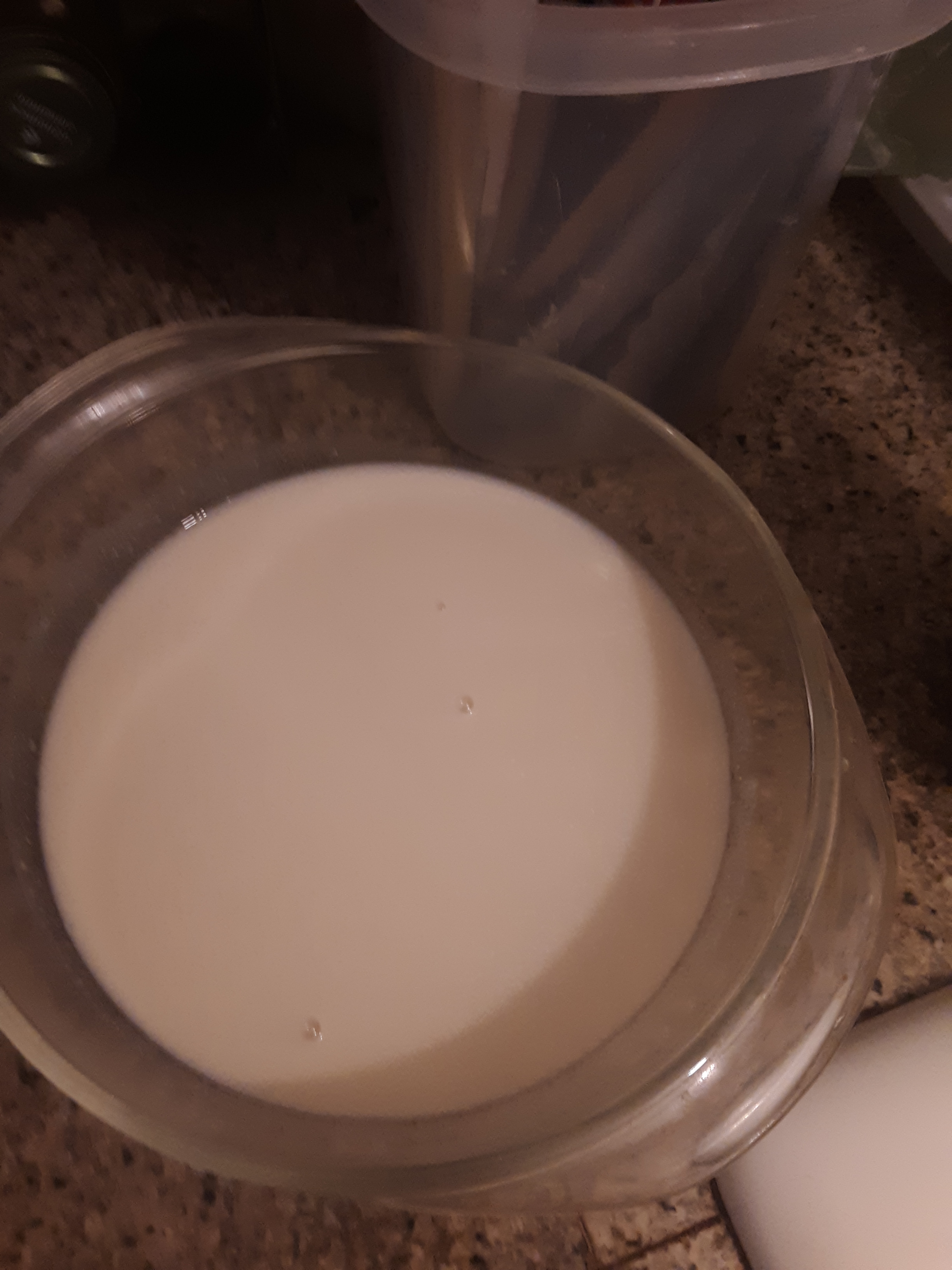
History of fermentation
Louis Pasteur was the scientist that discovered the microorganisms, and also the same person that discovered pasteurization. As eatcultured.com mentions, “Finally Louis Pasteur, a nineteenth century French biologist, is known as the “father of microbiology” for his pioneering work uncovering the role microbes play in fermentation as well as less desired outcomes like sickness and food spoilage. His invention, pasteurization, is still used today to kill microbes that could cause sickness or cause food and drink to spoil.” The picture below shows Louis Pasteur working on a fermentation experiment. As growlermag.com mentions, “Louis Pasteur famously set brewing on a scientific path with his Études sur la Bière (Studies on Beer, 1876), explaining that fermentation was caused by the work of microorganisms. Though Pasteur did not actually identify the microorganisms that were responsible—Pasteur believed them to be bacteria—Emil Christian Hansen of the Carlsberg Brewery in Copenhagen soon identified the correct yeasts, marking a major milestone in the history of fermentation.” I wonder is Emil in the picture below:
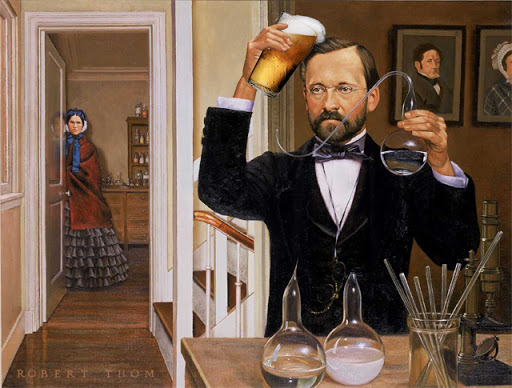
eatcultured.com mentions, “The term fermentation comes from the Latin verb ‘fervere’, which means “to boil. It’s likely this term describes what happens when yeast converts fruit juice (for wine) or malted grain (for beer) into alcohol, among other bi products. Tretching back as far as human history itself, the origins of fermentation are hard to track down. However, historians have traced signs of fermentation in food and beverage preparation dating as far back as 7000 BC. However, we also have evidence that other cultures, like ancient Chinese dynasties, were using fermentation for other grain based beverages like rice wine as long ago as 4000 BC. How that all started is lost to time. We know that one microbe, yeast, has been around for at least 80 million years.” The article continued by saying that early humans fermented food because food kept longer, easy to digest, and kept food safe. Food safety was around for thousands of years. The use of heat to cook food is the simplest way to kill germs. Only thing you need while you’re camping or if you’re stranded on an island.
Fermentation & gut health
Fermentation has been on the rise in 2019 as people are realizing the importance of gut health. As Sloan from institute of food technology mentions, ” as the cultural shift from focusing on heart health to gut health and its connection to the brain continues, it’s not surprising that 39% of consumers are adding more probiotics to their diets, per the Hartman Group’s 2019 Health + Wellness report. While not all fermented foods contain viable probiotics, kombucha, kimchi/sauerkraut, natto, kefir/yogurt, and some fermented vegetables/pickles are among the trendy fermented foods that do, as long as they are not pasteurized pr prepared using vinegar.” My favorite is kimchi & yogurt which are always found in my fridge. It’s always a great addition to any meal. Here I added sauerkraut to my breakfast:
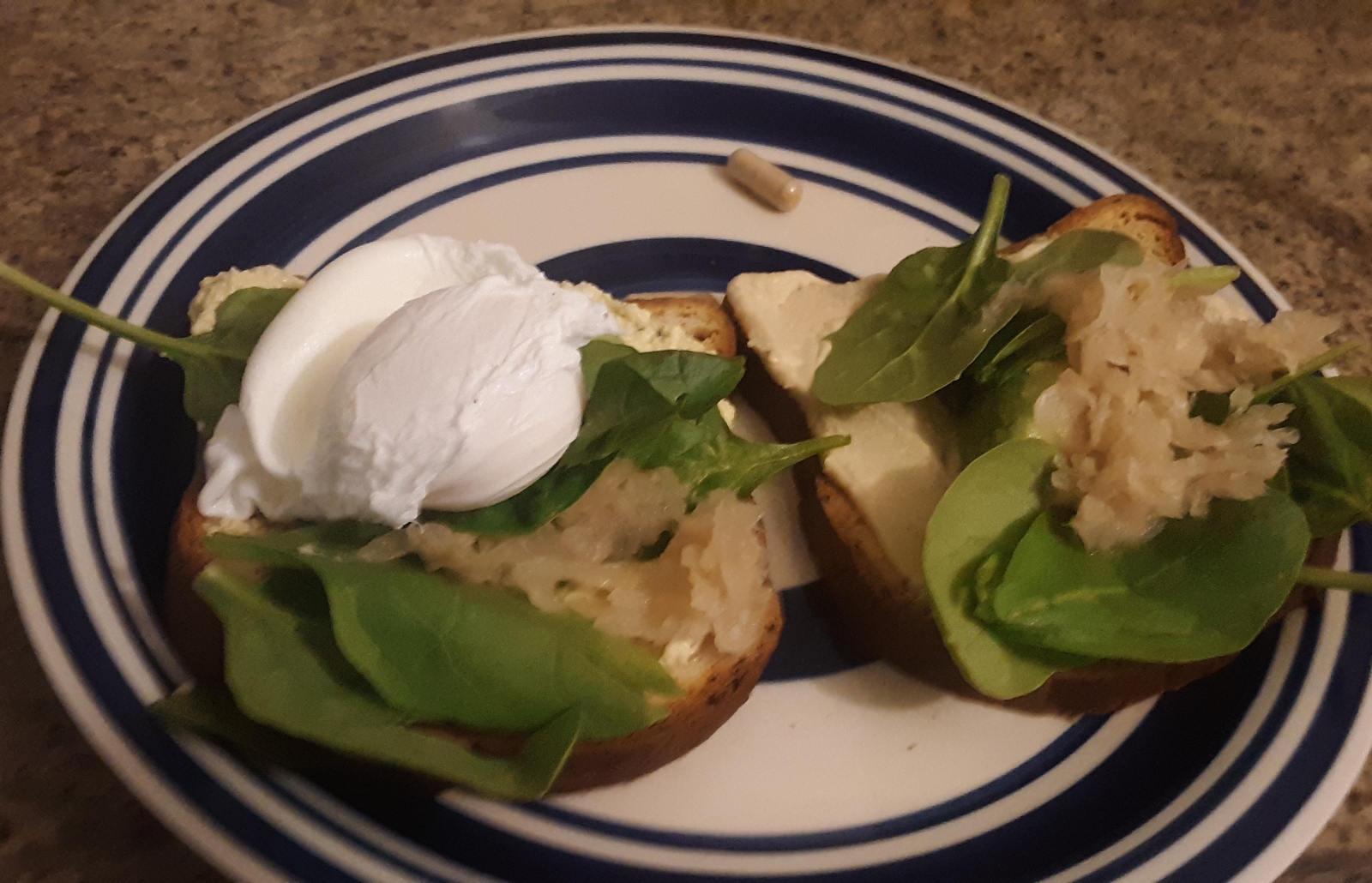
NCBI.com mentions the benefits of probiotics as follows, “In addition, probiotics might be ineffective, and possibly counterproductive, in restoring the baseline gut microbiome after it has been altered by antibiotic treatment. Indeed, probiotics may not be quite as good as was commonly thought, and they could even be harmful if taken after antibiotics.” Also, it was recommended to eat fermented foods which benefits your gut bacteria. As NCBI.com continues, “Ingestion of vibrant probiotics, especially in fermented foods, is found to cause significant positive improvements in balancing intestinal permeability and barrier function, with direct effects on metabolic syndrome, atherosclerosis, inflammatory bowel diseases, and colon cancer and indirect effects on depression, anger, anxiety, and levels of stress hormones.” Though there is still not enough evidence to prove the benefits of probiotics & fermentation on human health.
Fermentation process
An example of a fermentation process is vinegar. As NCBI.com explains a bit about the process, “As Fermented products require microorganisms, i.e., Saccharomyces yeasts and lactic acid bacteria, yielding alcohol and lactic acid. ” Roger from the Food Technology magazine gives a good explanation of fermentation, “Produced through double fermentation with yeast to generate ethanol and typically with Acetobacter, which produces acetic acidic from ethanol, it is a liquid product that contains at least 4% or 5% weight per volume of acetic acid and no more than 0.5% ethanol, depending on the country. In plain terms, yeast digests and ferments sugars and converts them into alcohol; Acetobacter then turns the alcohol into acetic acid.” Another example, the picture of rye fermentation shown in the start of the article. In the process of fermentation, the microorganisms digest the sugars in the rye which gave the pungent smell. The process helps you digest the grains easier, than say, cooking the rye grain.
This is an example of a dessert vinegar from Mango. Interesting; vinegar-world.com says you get a multi-layered taste – sweet and sour – combining both together in your mouth:
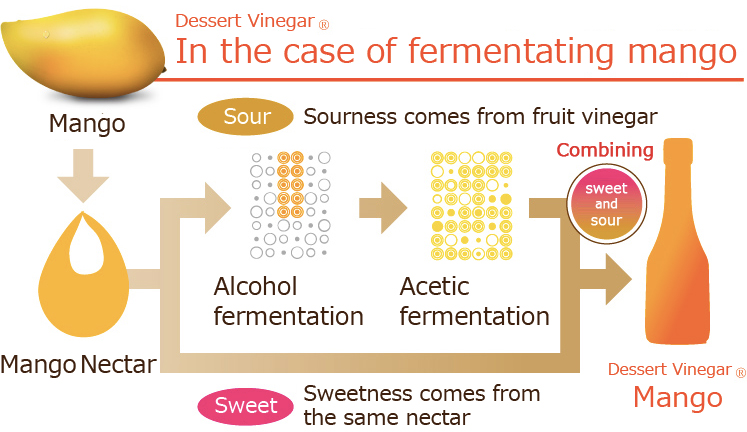
References
- Favoring Fermented. Sloan, Elizabeth A. Food Technology – Advancing Food & Health through Sound Science (November 2019). Page 13.
- Vinegar in Health Dynamics. Clemens, Roger. Food Technology – Advancing Food & Health through Sound Science (November 2019). Page 16.
- One Health, Fermented Foods, and Gut Microbiota (Dec 3, 2018). Bell, Victoria, Ferrão, Jorge, Pimentel, Lígia, Pintado, Manuela , and Fernandes, Tito. National Center for Biotechnology Information, U.S. National Library of Medicine (volume 7, issue 12: 195). Website: https://www.ncbi.nlm.nih.gov/pmc/articles/PMC6306734/.
- Fermentation: A History (Dec. 08, 2017). Website: https://eatcultured.com/blogs/our-awesome-blog/fermentation-a-history.
- Magical Microbes – how to feed your gut. Fleming, Amy (January 29, 2018). The Guardian. Website: https://www.theguardian.com/lifeandstyle/2018/jan/29/magical-microbes-how-to-feed-your-gut
- Website: https://www.fibreful.com/your-gut/
- (2004
- Fermentation as an Art and Science in Brewing History (September 30, 2013). Website: https://growlermag.com/fermentation-as-an-art-and-science-in-brewing-history/
- Website: https://www.vinegar-world.com/english/

Pingback: Precision fermentation | Living Well In The 21st Century